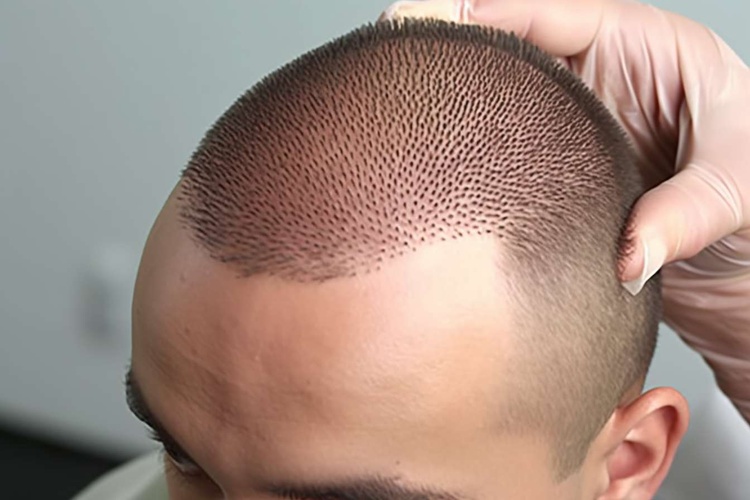Ultimate Hair Transplant Guide: Restore Natural Hair
Explore a complete, up-to-date guide to hair transplantation covering FUE techniques, eyebrow transplants, recovery timelines, and how to choose a trustworthy clinic in Eindhoven. Learn realistic expectations, benefits, pricing ranges, and aftercare tips so you can decide confidently on long-term hair restoration.

Hair transplantation is now a dependable solution for treating hair loss and refining facial features. Experienced surgeons move healthy follicles from donor areas into thinning or bald zones where they integrate and grow like native hair. Procedures are typically performed under local anesthesia, and depending on graft numbers and complexity, sessions can last several hours. Transplanted follicles follow a natural growth cycle; while early shedding is common, full cosmetic results often appear within about a year.
How the procedure works
The process starts by identifying donor hair, usually taken from the back or sides of the scalp, since these follicles are often resistant to androgenetic hair loss. Surgeons either remove individual follicular units or excise a strip of tissue, then create recipient sites with precise angle and spacing to mimic natural hair direction. Follicular Unit Extraction (FUE) has become the preferred modern method because it harvests follicles one by one, minimizing visible scarring and allowing quicker healing. Strip excision (FUT) remains an option in specific situations where many grafts are needed.
Operations are generally done with local anesthesia, reducing the risks associated with general anesthesia. After the transplant, clinics provide detailed aftercare instructions to manage swelling, discomfort, and the healing of tiny incisions. It’s normal for transplanted hairs to shed in the weeks after surgery; this makes way for new growth that gradually thickens and matures over several months.
Benefits of hair transplantation
A successful transplant delivers more than cosmetic enhancement—it often improves self-esteem and social confidence. Transplanted hair grows, can be styled, and ages naturally, offering a durable alternative to temporary fixes. Compared to wigs, concealers, or topical products, surgical restoration provides a long-term solution with minimal ongoing maintenance once healing is complete.
Transplants can address male and female pattern baldness, traction alopecia, scars, and hair loss from prior procedures. Surgeons can restore a receding hairline, increase density in thinning regions, or rebuild eyebrows to improve facial symmetry. Because grafts come from genetically robust donor zones, results are typically long-lasting.
Eyebrow restoration with transplant techniques
Restoring eyebrows with hair transplantation requires great precision and an aesthetic eye. Surgeons harvest finer scalp hairs that closely match eyebrow texture and implant them individually to recreate the natural arch and growth direction. While transplanted eyebrow hair is permanent, it continues to grow and will need regular trims and shaping to maintain a neat appearance. This option can correct damage from over-plucking, trauma, scars, or congenital sparse brows and offers a more durable result than makeup or microblading.
How transplantation compares with other cosmetic choices
Non-surgical alternatives have their place but differ fundamentally from transplants. Scalp micropigmentation creates the illusion of density without producing hair, while hair systems deliver immediate coverage but demand ongoing upkeep and replacement. Topical concealers are temporary and require daily application. Compared with many cosmetic operations, hair transplantation is minimally invasive and usually safer because it’s performed under local anesthesia. Recovery times tend to be shorter, with many patients resuming normal activities within one to two weeks. Still, realistic expectations are important: full density takes time, and additional sessions might be needed to reach your goals.
Choosing the right clinic in Eindhoven
Selecting a reputable clinic is crucial. Prioritize board-certified surgeons or specialists who focus on hair restoration. Review before-and-after photos, ask for patient references when available, and confirm the team’s experience with the technique you prefer, such as advanced FUE. Inquire about donor management, typical graft survival rates, infection control practices, and how they handle complications.
Ask whether complementary treatments—like platelet-rich plasma (PRP) injections or low-level laser therapy—are offered and whether they’re included in the quoted price. Cost matters, but very low fees may indicate compromised quality or inexperienced staff. Request a detailed estimate that lists consultation fees, graft pricing, medications, and follow-up appointments so there are no surprises.
| Procedure | Typical Price Range (EUR) |
|---|---|
| FUE scalp transplant (single session) | €2,000 – €8,000 |
| Eyebrow transplant | €800 – €2,500 |
| Complementary PRP therapy | €200 – €800 per session |
All prices are approximate and will vary based on clinic, surgeon experience, number of grafts, and individual treatment plans.
Recovery timeline and realistic expectations
Post-op care usually includes gentle scalp washing, avoiding heavy exercise for a short period, and protecting the treated area from strong sunlight. Small scabs or redness at implant sites typically clear within one to two weeks. Transplanted hairs commonly shed in the early months; this is a normal phase before new follicles enter the growth cycle. New hair typically becomes noticeable around three to four months, with significant improvement by six months and near-final results around 9–12 months. Some patients opt for follow-up sessions to reach the desired density.
Following your surgeon’s aftercare instructions—sleeping positions, medication schedules, and wound care—helps optimize graft survival and speeds recovery. Keep realistic expectations about timing and density: successful outcomes come from experienced teams, appropriate technique selection, and patient patience.
Hair transplantation can deliver natural-looking, enduring results when performed by qualified professionals and supported by proper aftercare. If you’re considering restoration in Eindhoven or elsewhere, research clinics thoroughly, ask detailed questions, and choose a surgeon whose experience and results align with your goals.
This article is for informational purposes only and should not be considered medical advice. Please consult a qualified healthcare professional for personalized guidance and treatment.






